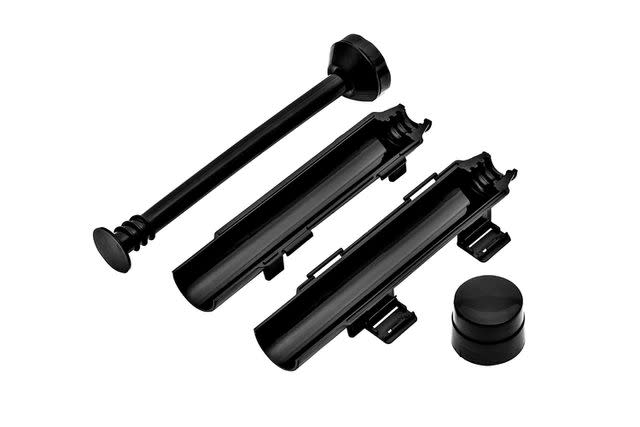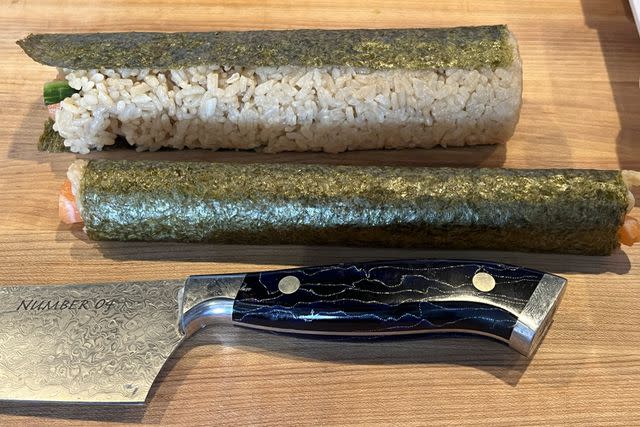Does This Viral Sushi-Making Tool Actually Work?
Dotdash Meredith and Yahoo Inc. may earn commission or revenue on some items through the links below.
Sort of.

Food & Wine / Reese Herrington
There are few foods I don’t try to make at home, and sushi is at the top of that list. For me, what is supposed to be a delicious and potentially romantic way to spend an evening turns into a trainwreck. Rice gets stuck everywhere, appearing days later crusty and attached to the inside of my T-shirt. The rolls themselves are lopsided at best, falling apart at the touch. And at the end of it all, that sushi-grade tuna I splurged for is left to spoil on the countertop — or devoured sloppily. The only enjoyable part is that drinking sake is simple and requires no skill whatsoever.
I never thought I’d attempt making sushi at home ever again, and then the algorithm lured me back in. When scrolling TikTok, I came across this strange looking gadget called the Sushi Bazooka. I was amazed: Users whipped it open, and seconds later, out popped a perfectly formed roll. But there was no way it could actually work. Right? Right?

Amazon
To buy: Ured Sushi Bazooka, $7 at amazon.com
The only way to know for sure was to try it out myself. Braving the failures of my past, I ordered one off Amazon — it was only $7, which further convinced me it wouldn’t work — and it arrived on my doorstep a week later. After making a batch of rice in my rice cooker, I flipped open the plastic tubing and spread rice evenly on each side. For the first go-round, I used julienned carrots as a filling. I closed the two ends, and pushed the throttle through.
I screamed a little. All of a sudden, out of the end of the tube slid a perfectly formed roll.
But does it work better than a bamboo mat? This is one question I couldn’t answer for myself. As I mentioned, whenever I used a bamboo mat in the past, tears were involved.
So I enlisted the help of an actual sushi chef, both because I wanted to see what he thought of the thing, and for, you know, actual “science.” Michael Carranza, of Texas Sushiko is a rising chef in Austin, Texas, with renowned knife skills, expert fish-sourcing abilities, and a deep knowledge of rolls. In fact, most of his menu is made up of hand rolls.
“I’ve seen this thing before,” he laughed, and mentioned he always wanted to try it but would never spend money on it. While he was prepping a roll in the sushi bazooka and on a bamboo mat, I noticed he was wearing plastic gloves to handle the rice. He said that he uses ones like these every day, and that the polyethylene ensures nothing, not even rice, gets stuck on his hands.

Food & Wine / Daniel Modlin
Back to the sushi bazooka. The roll Carranza made using a bamboo mat was, without a doubt, better-looking and better-tasting. Not only did the bamboo mat allow him to make smaller rolls, the rolls were ultimately tighter, easier to cut, and from the looks of an expert, even quicker to shape.
But don’t count the sushi bazooka out for good. It may not make better sushi, but maybe that’s not where it earns its keep. Carranza said it best: "I think this is the perfect thing for home cooks looking to get into making sushi at home. It's kind of like chopstick training wheels. Is it the most efficient? No, but it'll help you learn and get going."
I, for one, need a little help on my sushi making journey. Beyond asking a sushi chef for some tips — which you should certainly do — this thing might actually be the starting point we all need.
At the time of publishing, the price was $7.
For more Food & Wine news, make sure to sign up for our newsletter!
Read the original article on Food & Wine.

